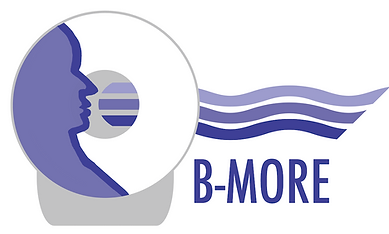
Collaborations
The B-MORE Study
The primary goal of B-MORE is to assess the negative predictive value of a marker derived from breathing enhanced OS-CMR in distinguishing severe coronary artery disease patients from healthy volunteers, compared to the reference standard FFR. This marker will be composed of changes to breathing induced myocardial oxygenation reserve (B-MORE), circumferential strain response, and heart rate changes, measured during a breathing enhanced OS-CMR scan.

AQUA Trial
AQua’s Trial goal is to determine if automated quantitative myocardial blood flow analysis of stress CMR images will identify ischemia as well as physicians with substantial expertise in the analysis of CMR perfusion images. This study also evaluates whether the use of automated quantitative myocardial blood flow analysis will improve the diagnostic confidence of both less experienced and more experienced CMR physicians. Additionally, this study creates a multi-center collaboration with the infrastructure to efficiently test and validate future technological developments in CMR.

STOP-CA
The purpose of this study is to test the effect of statin therapy, as compared to placebo, on cardiac dysfunction after administration of anthracyclines among patients with lymphoma.

The HAPI-FIT Study
The HAPI FIT study uses OS-CMR results and lung regional ventilation measured by hydrogen proton MRI and other measures taken during pulmonary MRI of young adults born preterm in order to examine the effect of a supervised exercise intervention program on the cardiopulmonary function of this population

The RESet for remission trial
This trial's aim is to optimize remission strategies for early-onset type 2 diabetes by harnessing the potential for additive health benefits resulting from combining low-energy diets with structured exercise training.

The Bedrest study
The Bedrest study’s primary goal is to assess changes in body composition, physical performance and postural control associated with head down bed rest (HDBR) with and without exercise countermeasure, and to investigate these changes relative to biological age determined from DNA methylation. This study will also assess the presence of HDBR-induced changes in cognitive performance across different domains (e.g. memory, attention and executive function) and sleep quality, as well as the effects of exercise countermeasure on these measurements.

WIM-HOF Protocol
The primary goal of this study is to analyze changes in global and regional myocardial oxygenation changes in OS-CMR signal intensity, in response to the Wim Hof breathing maneuver, in patient populations and healthy volunteers

CARDEA
This study aims to investigate early cardiovascular disease markers, such as inflammatory markers, lifestyle factors, and CMR-derived parameters, in children and adolescents with Type 1 Diabetes, identifying potential factors as targets for early prevention strategies in this at-risk population

SYNDX/BRAVE
The overall goal of this study is to use OS-CMR with breathing maneuvers as a non-invasive diagnostic test of coronary microvascular dysfunction. As such, the primary aim is to determine the variation of myocardial oxygenation response between women with chest pain and presumed coronary microvascular dysfunction and aged-matched controls. The secondary goal is to correlate this myocardial oxygenation response with conventional first-pass perfusion CMR, and with myocardial oxygenation response during adenosine infusion.







